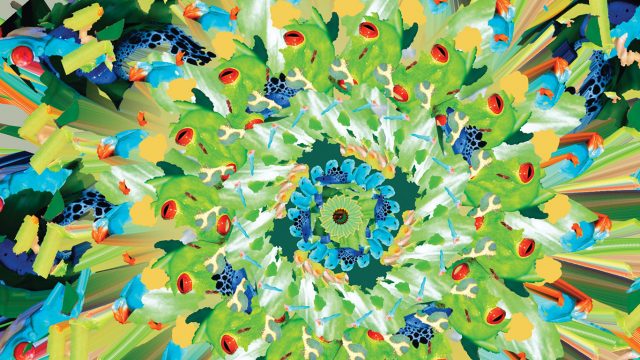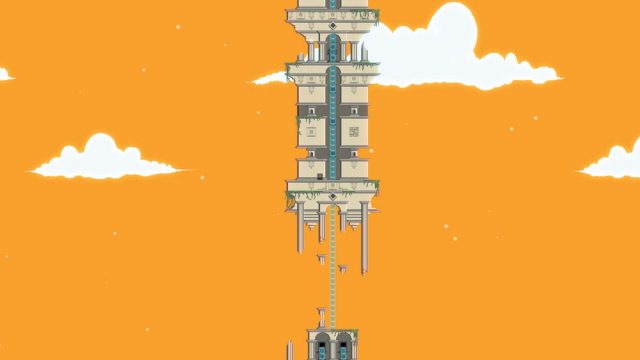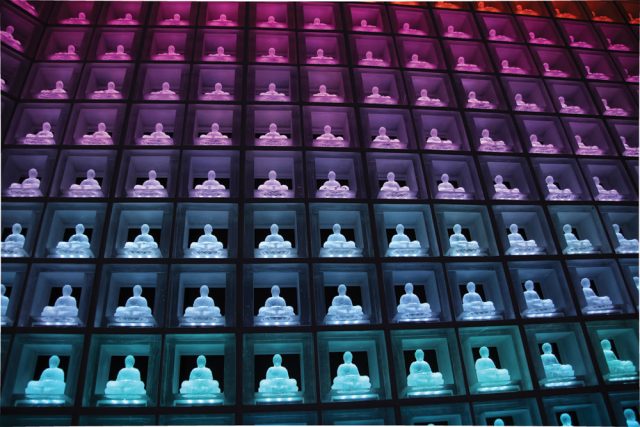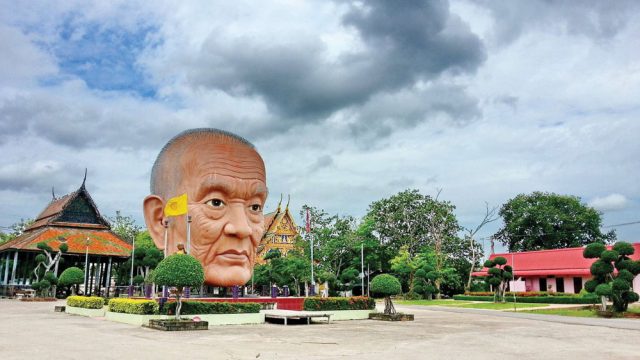
Meme Me a Mandala
In the cyberworld of Internet memes, mandalas are starting to serve a purpose other than that of their customary role in the Hindu and Buddhist traditions. In June 2016, Apple TV launched Miraj, an app that creates moving kaleidoscopic mandalas based on any word that you speak into your Siri-enabled remote. Say “Pizza” or “LOL cat,” for instance, and the app searches the Internet for relevant images, processes them through a graphics engine, then spits out a psychedelic set of memes for your viewing pleasure. While this app might not be helpful in establishing samadhi, we’re sure it’s a favorite at parties.
Gelugpa Graduates
Twenty nuns have recently become the first Tibetans to receive their Geshema degrees in Buddhist philosophy in the Gelugpa school of Tibetan Buddhism. The degree, equivalent to a doctorate, was previously only given as a Geshe degree (Geshe being the title for men). the Department of Religion and Culture of the Central Tibetan Administration reported over the summer that all 20 female candidates had passed their lengthy examination, a process that takes four years and includes four 12-day periods during which the nuns take oral and written tests. The exams cover material from the the great canonical texts and other material the candidates have learned over the course of 17 years of study. In light of the fact that many of these women were illiterate when they escaped from Tibet, this achievement is not only an important marker of progress for Buddhism but also an astounding accomplishment on behalf of women worldwide.

If Super Mario Went to the Bardo
The British game developer Blind Sky Studios recently released Mandagon, a freeware game based on Tibetan Buddhist philosophy and theology. The game’s characters explore the bardo—the passage between death and rebirth—in a world with no enemies and no way to “die,” features common to most video games. There’s no plot, either: Mandagon is designed to emphasize the participant’s experience of gameplay, which includes lush landscape to travel through, ladders and pulleys to help you rise high in the sky, cliffs to balance on, and the occasional meeting with a golden eagle who offers the gift of flight. Mandagon is a meditative game that requires your full attention and focus, says the company’s lead artist and codesigner, Tom Kitchen. He worked on the game during the process of grieving for a loved one who had passed away. While researching Tibetan Buddhist culture, he began incorporating elements related to Tibetan cosmology, and eventually Mandagon was created. Play for free and experience the atmosphere of Mandagon for yourself at http://tricy. cl/playnow, or check out a longer piece about the game on Trike Daily http:// tricy.cl/mandagon.

Blinking Buddhas
Leave it to Tokyo to give everything a high-tech makeover—even death. The Ruriden columbarium of Koukoku temple, in the city’s Shinjuku ward, might be the world’s most futuristic final resting place. Visitors swipe in with an ID card before stepping into a chamber filled with 2,046 small glass statues of the Buddha lit by LED lights. Many of the figures sit before a drawer filled with ashes; the appropriate Buddha begins to blink when the family or friends of the departed enter the chamber. Yajima Taijun, the temple’s head monk, says that the space was designed for singles as well as couples who do not have children, so that they don’t “feel lonely” in the afterlife. Ashes stay inside the columbarium for 33 years before they’re buried below the building. Currently, 600 of the temple’s 900 available spots are in use, and the remaining 300 are reserved. (The rest of the glass Buddhas are only for show.)
Arctic Enlightenment
The world’s northern-most Buddhist stupa was consecrated this year in the town of Apatity, Russia. Located 1,050 miles north of Moscow, the “Enlightenment Stupa” was built by two local businessmen brothers, Igor and Oleg Belyaev. If it seems unlikely that Buddhist practice could have migrated as far north as the Arctic Circle, consider this little-known fact: the first Buddhist temple in Europe was built in St. Petersburg in the early 20th century.

The Case of the Disembodied Monk
Thai temples are famous for their massive, towering Buddhas. But at Baan Pho temple in Chachoengsao, it’s not Siddhartha who looms over visitors but the disembodied, hyperrealistic head of the revered 16th-century Buddhist monk Luang Pu Thuat. Its wrinkly, liver-spotted visage is giving locals offense—not to mention the creeps—while the temple attempts to raise funds to finish the sculpture. Once completed, it will be 55 feet high and sit on the temple’s roof.
Thank you for subscribing to Tricycle! As a nonprofit, we depend on readers like you to keep Buddhist teachings and practices widely available.